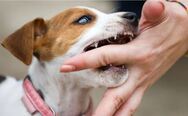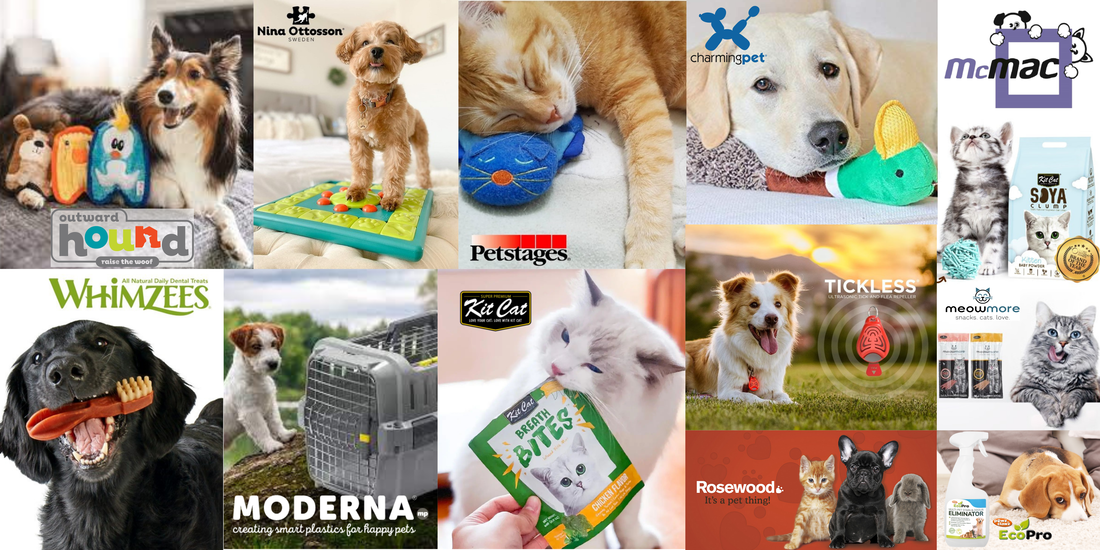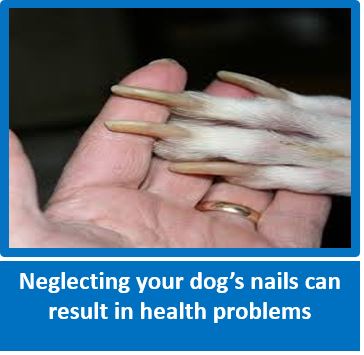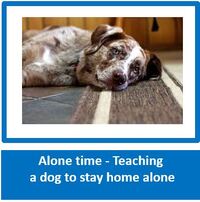Nipping
By Honor Tarpenning, NextDayPets.com Staff
http://www.nextdaypets.com - really great website - do visit when you have time

Nipping is a behavior that is completely normal among dogs, especially puppies, and has a lot to do with a puppy’s learning process. The purpose of this article is to discuss nipping, not biting. Nipping is a form of communication, interaction, exploration, and play; whereas biting is a form of aggression. If your dog has a biting problem, or other aggression issues, you should visit your vet to make sure there are no underlying physical causes, and contact a dog behavior specialist to help you safely deal with the problem.
Puppies have no hands with which to explore the world around them, so they must use their mouths. They mouth and nip at their mother and littermates to communicate and play. Puppies learn something called bite inhibition from this behavior. When puppy nips his littermates or mother too hard, they respond with a yelp, and in the mother’s case, often with a warning or correction. This is how they learn what’s too hard, and what is acceptable. Puppies who are weaned and taken away from their littermates too early do not get the chance to learn bite inhibition, so they will be more nippy and harder to train out of nipping.
Remember that nipping is not an aggressive behavior, so do not respond to it with aggression. Your puppy is being playful and testing his limits through play. As with small children, a big part of learning what’s right, is first doing something wrong. Keep a strong hold on your patience as you train your puppy and you will do fine.
Start by giving a loud “ow!” or a shriek whenever your puppy nips. It is important that you do this whenever your puppy’s teeth intentionally touch your skin, not just when they nip too hard. Dogs do not understand the concept of “sometimes”, but they do great with “never.” You must teach your puppy that it is never, ever ok for his teeth to contact your skin. Come up with a command like “nice,” or “gentle” to tell puppy when he should be careful.
When you sit down to work with your puppy, have a pocket or treat pouch full of small, easy-to-eat treats. Hold a treat in your closed fist and in the other hand, hold your puppy’s collar. If he nips at your hand say “ow!” pull him away from the treat hand, and say “no, Gentle.” It is important that you pull him away from the treat hand, rather than pull the treat hand away from him, because that would encourage him to chase the treat hand, making it a game. Offer him your hand with the treat closed in your fist again, and if he sniffs it or licks it, rather than nipping, say “good Gentle” and give him the treat.
When you are playing with your dog, if he gets excited and starts nipping, stop play immediately. In his litter, if he nips too hard, the other puppies won’t play with him. Use the concept of social isolation to your advantage. If you are consistent, he will learn that nipping looses him his playmate, and that’s no fun. Also, avoid games that make your hand or body the toy, like slap boxing or wrestling. When you’re playing with your pup, try to keep a toy between you at all times, this will establish what is ok to lay teeth on, and what isn’t. Likewise, don’t play chasing games with your puppy, especially with herding breeds. This kind of play encourages puppies to nip at your ankles, which may be cute from a springy little puppy, but is not acceptable behavior once he grows up to be a big, powerful dog.
Another way to help your dog understand that he is not to nip people is to establish that all the humans in your home are above him in the pack. Everyone in the family should take part in your dog’s training and care. Kids can show dominance by being in charge of feeding. Have them always make puppy sit and stay before he can have his food bowl. If he lunges for his food bowl before he is told it is ok, have your child pick up the bowl and try again. A hungry dog will work hard to figure out what he needs to do to get you to leave the bowl on the ground, so it should only take a few tries to get him to wait for a command. You can also exert pack status with leash training. Make sure your dog always sits and is acting calm before you put the leash on, that you walk through doors first, and that your dog does not walk in front of you. Enforcing these few positive behaviors goes a long way towards showing your dog who is boss.
Remember to be patient and calm when teaching your dog not to nip. If you get riled up or act aggressively, you will set back your puppy’s training considerably; and besides, it’s no fun that way!
Puppies have no hands with which to explore the world around them, so they must use their mouths. They mouth and nip at their mother and littermates to communicate and play. Puppies learn something called bite inhibition from this behavior. When puppy nips his littermates or mother too hard, they respond with a yelp, and in the mother’s case, often with a warning or correction. This is how they learn what’s too hard, and what is acceptable. Puppies who are weaned and taken away from their littermates too early do not get the chance to learn bite inhibition, so they will be more nippy and harder to train out of nipping.
Remember that nipping is not an aggressive behavior, so do not respond to it with aggression. Your puppy is being playful and testing his limits through play. As with small children, a big part of learning what’s right, is first doing something wrong. Keep a strong hold on your patience as you train your puppy and you will do fine.
Start by giving a loud “ow!” or a shriek whenever your puppy nips. It is important that you do this whenever your puppy’s teeth intentionally touch your skin, not just when they nip too hard. Dogs do not understand the concept of “sometimes”, but they do great with “never.” You must teach your puppy that it is never, ever ok for his teeth to contact your skin. Come up with a command like “nice,” or “gentle” to tell puppy when he should be careful.
When you sit down to work with your puppy, have a pocket or treat pouch full of small, easy-to-eat treats. Hold a treat in your closed fist and in the other hand, hold your puppy’s collar. If he nips at your hand say “ow!” pull him away from the treat hand, and say “no, Gentle.” It is important that you pull him away from the treat hand, rather than pull the treat hand away from him, because that would encourage him to chase the treat hand, making it a game. Offer him your hand with the treat closed in your fist again, and if he sniffs it or licks it, rather than nipping, say “good Gentle” and give him the treat.
When you are playing with your dog, if he gets excited and starts nipping, stop play immediately. In his litter, if he nips too hard, the other puppies won’t play with him. Use the concept of social isolation to your advantage. If you are consistent, he will learn that nipping looses him his playmate, and that’s no fun. Also, avoid games that make your hand or body the toy, like slap boxing or wrestling. When you’re playing with your pup, try to keep a toy between you at all times, this will establish what is ok to lay teeth on, and what isn’t. Likewise, don’t play chasing games with your puppy, especially with herding breeds. This kind of play encourages puppies to nip at your ankles, which may be cute from a springy little puppy, but is not acceptable behavior once he grows up to be a big, powerful dog.
Another way to help your dog understand that he is not to nip people is to establish that all the humans in your home are above him in the pack. Everyone in the family should take part in your dog’s training and care. Kids can show dominance by being in charge of feeding. Have them always make puppy sit and stay before he can have his food bowl. If he lunges for his food bowl before he is told it is ok, have your child pick up the bowl and try again. A hungry dog will work hard to figure out what he needs to do to get you to leave the bowl on the ground, so it should only take a few tries to get him to wait for a command. You can also exert pack status with leash training. Make sure your dog always sits and is acting calm before you put the leash on, that you walk through doors first, and that your dog does not walk in front of you. Enforcing these few positive behaviors goes a long way towards showing your dog who is boss.
Remember to be patient and calm when teaching your dog not to nip. If you get riled up or act aggressively, you will set back your puppy’s training considerably; and besides, it’s no fun that way!





